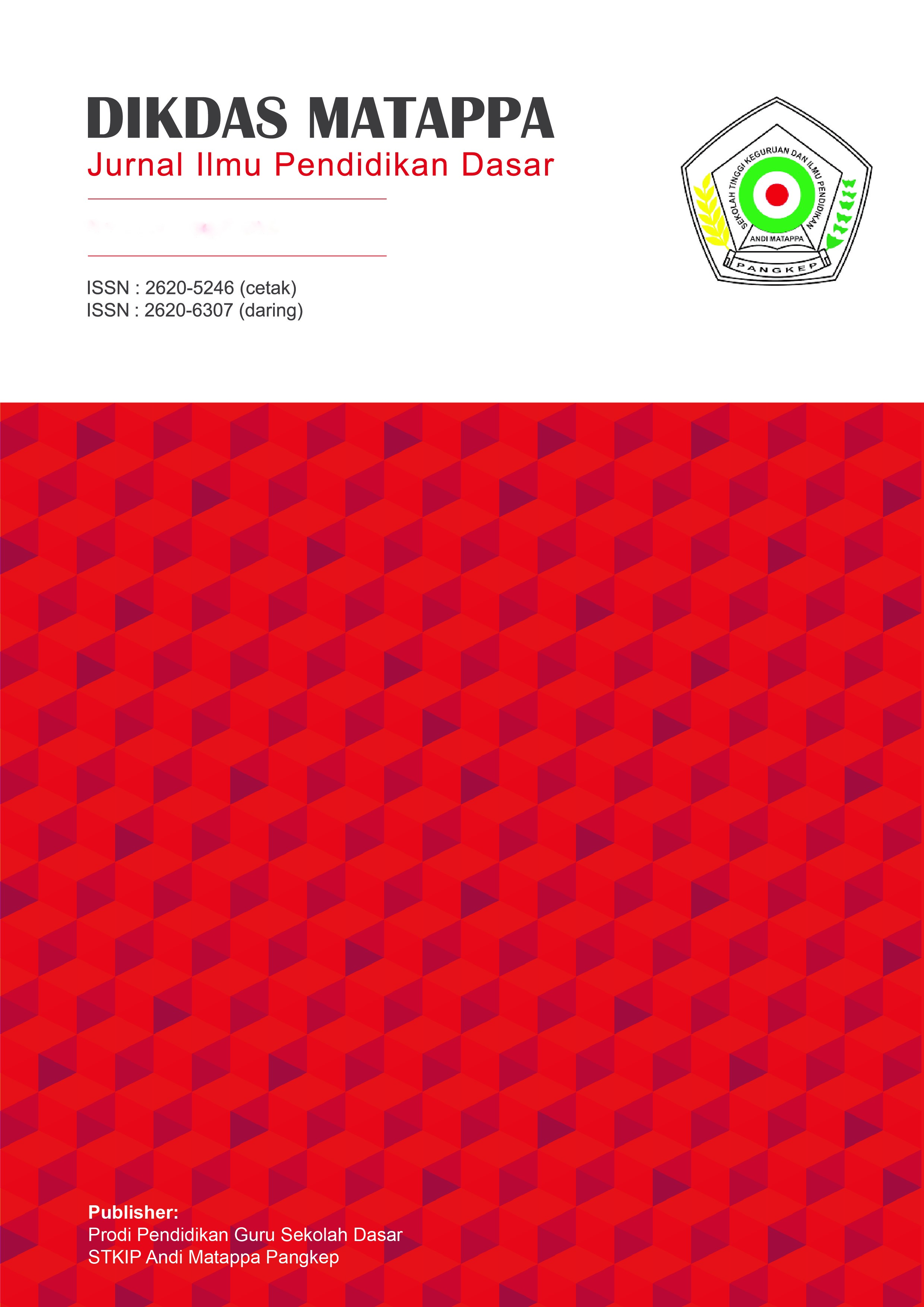Faktor-Faktor Penyebab Miskonsepsi Peserta Didik Pada Materi Sains Sekolah Dasar di Kota Parepare
DOI:
https://doi.org/10.31100/dikdasmatappa.v8i03.4290Keywords:
Literature Review, QualitativeAbstract
Factors Causing Students’ Misconceptions." This study aims to identify the factors that lead to misconceptions. It is a descriptive qualitative study that employed a qualitative approach. Data and information were obtained from primary sources through diagnostic tests, interviews, and on-site data collection at the research location. Understanding these factors will enable educators to recognize and address the sources of misunderstanding among their students. The causes of misconceptions identified in the study include: (1) learner-related factors — prior knowledge, associative thinking, humanistic thinking, incomplete or incorrect reasoning, faulty intuition, the stage of students’ cognitive development, students’ abilities, and interest in learning; (2) educator-related factors; (3) textbooks and literature; and (4) teaching methods.
References
Adi, Y. K., & Oktaviani, N. M. (2019). Faktor-faktor penyebab miskonsepsi siswa SD pada materi life processes and living things. Profesi Pendidikan Dasar, 6(1), 91-104.
Fariza, A., Hasibuan, A. U. H., Simamora, E. C., Ermawan, M. H., Siregar, N. S., Mirzah, N., & Gaol, S. I. L. (2025). Miskonsepsi Siswa Sekolah Dasar tentang Konsep IPA: Studi Kasus di kelas VI SDN 024755. Jurnal Bintang Pendidikan Indonesia, 3(2), 207-217.
Inabuy, V., Sutia, C., Maryana, O. F. T., Hardanie, B. D., & Lestari, S. H. (2021). Ilmu Pengetahuan Alam untuk SMP Kelas VII. In Pusat Kurikulum dan Perbukuan Badan Penelitian dan Pengembangan dan Perbukuan Kementerian Pendidikan, Kebudayaan, Riset, dan Teknologi.
Maftukhah, N. L. (2015). Pengelolaan Lingkungan Belajar Sebagai Motivasi Peserta Didik Di SDIT Luqman Al-Hakim Internasional Yogyakarta (Doctoral dissertation, UIN Sunan Kalijaga Yogyakarta).
Mahrani, M., Maruf, M., Bancong, H., Nurlina, N., & Rahmawati, R. (2023). Development of TPACK-Oriented Teaching Materials Assisted by Google Sites in Science Learning for Elementary Schools. European Online Journal of Natural and Social Sciences, 12(4), pp-360.
Pertiwi, C. A., & Setyarsih, W. (2015). Konsepsi Siswa Tentang Pengaruh Gaya Pada Gerak Benda Menggunakan Instrumen Force Concept Inventory (FCI) Termodifikasi. Jurnal Inovasi Pendidikan Fisika (JIPF), 4(2).
Pujayanto, P. (2015). Diagram Gaya Normal. In Seminar Nasional Fisika dan Pendidikan Fisika Ke-4 2015. Sebelas Maret University.
Purnomo, A., Kanusta, M., Fitriyah, Guntur, M., Siregar, R. A., Ritonga, S., Nasution, S. I., Maulidah, S., & Listantia, N. (2022). Pengantar Model Pembelajaran. Yayasan Hamjah Diha.
Rohmah, M., Priyono, S., & Septika Sari, R. (2023). Analisis Faktor-Faktor Penyebab Miskonsepsi Peserta Didik Sma. Utility: Jurnal Ilmiah Pendidikan Dan Ekonomi, 7(01), 39–47. Https://DOI.Org/10.30599/Utility.V7i01.2165
Sadiqin, I. K., Santoso, U. T., & Sholahuddin, A. (2017). Pemahaman konsep IPA siswa SMP melalui pembelajaran problem solving pada topik perubahan benda-benda di sekitar kita. Jurnal Inovasi Pendidikan IPA, 3(1), 52-62.
Syuhendri. (2018). The Development Of Newtonian Mechanics Conceptual Change Texts To Overcome Students’ Misconceptions. 123(3).
Subekti, A. (2017). Daerah tempat tinggalku: buku tematik terpadu kurikulum 2013 (Tema 8), buku guru SD/MI kelas IV.
Sukran, R. (2023). Analisis Miskonsepsi Peserta Didik Pada Pembelajaran Fisika Menggunakan Metode Certainty Of Response Index Di SMPN 1 Indrapuri (Doctoral dissertation, UIN Ar-Raniry Banda Aceh).
Suryanto, A., & Bakhri, S. (2021). Buku Fisika 1. Penerbit Insan Cendekia Mandiri (Group Penerbitan CV Insan Cendekia Mandiri).



